APS-C
Latest
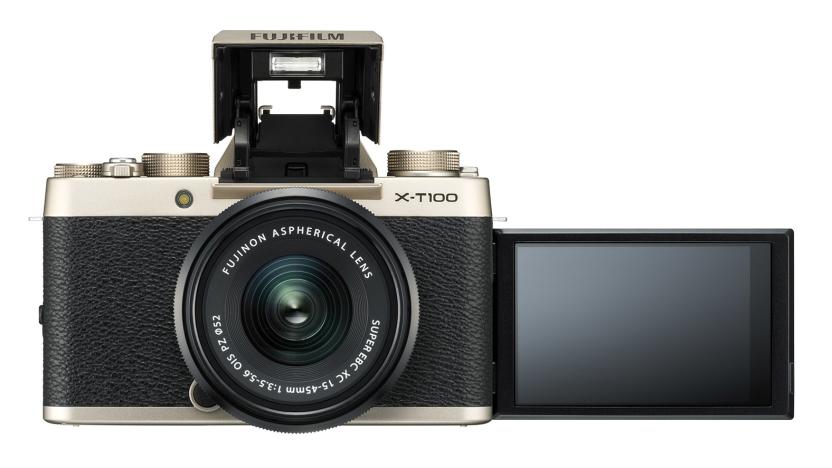
Fujifilm's entry-level X-T100 brings classic style for $600
Fujifilm has unveiled the X-T100, an interesting mirrorless camera that's quite similar, spec-wise, to the entry-level X-A5, but looks more like the X-T20. It's one of the few inexpensive mirrorless cameras out there with an electronic viewfinder, great for serious photographers on a budget. Unfortunately, it's not as great for video, as Fujifilm crippled the 4K by limiting it to 15 fps.
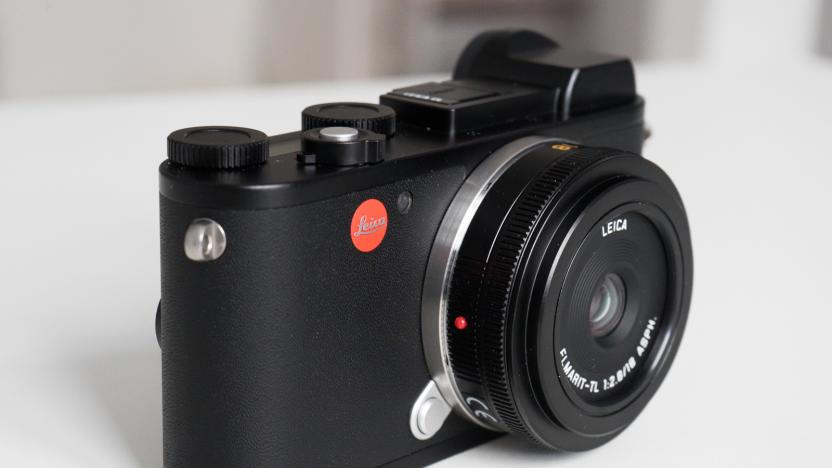
Leica's CL gives an iconic design the modern tech it deserves
Up until recently, Leica built lovely, expensive cameras that no-one ever called "state-of-the-art." The TL2, however, recently marked a change in direction. Not only was it relatively cheap for a Leica at $1,950, but it was endowed with modern features like 4K video. It's pushing that idea further with the CL, its new $2,795 flagship 24.2-megapixel APS-C mirrorless that looks and feels more like an old-school Leica, thanks to a new body and manual dials. At the same time, it's got the tech you'd expect in a modern camera, including an all-new electronic viewfinder.

Canon's G1 X Mark III is its first APS-C sensor compact
Canon has unveiled its first-ever APS-C sensor compact zoom camera, the 24.3-megapixel PowerShot G1 X Mark III. It trades in the sleek body of the last G1 X Mark II model for a more DSLR-like, physical dial-laden body that's very similar to the G5 X compact. It also features Canon's fast and accurate dual-pixel autofocus and an all-new 2.36 million OLED electronic viewfinder (EVF). To get those big-sensor bragging rights, however, Canon had to sacrifice a few key features from the last model and jack up the price significantly.
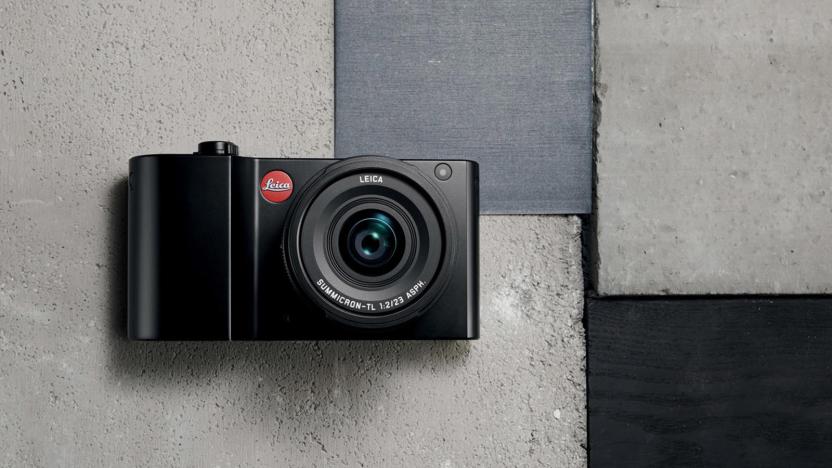
Leica's TL2 gains more megapixels and 4K video
When you consider the limited features you get for the astronomical prices, it's easy to roll your eyes at Leica. However, it's just released the TL2, the compact APS-C successor to the original TL, that finally looks like a modern mirrorless. For $1,950 -- a lot, but not as crazy as some models -- you get an all-new 24-megapixel sensor, a shutter that allows up to a 20 fps shooting speed and 1/40,000th of a second and, yep, 4K video.

Canon's lightweight Rebel SL2 has a much-improved sensor
If you prefer a DSLR's true optical finder to the EVF of a mirrorless, but don't want to lug a heavy camera, there aren't many options. Canon does have one worthy of consideration, however: the EOS Rebel SL2. It replaces the four-year-old Rebel SL1 and brings it to a much more modern standard, thanks mostly to a new 24.2-megapixel APS-C sensor. At the same time, it only gains a bit of weight, going from 407 to 453 grams, which is exactly one pound.

Fujifilm's X-T20 is an affordable, compact take on the X-T2
Fujifilm has unveiled the X-T20, a successor to the popular X-T10 that improves on it in nearly every way. The old 16-megapixel sensor and processor have been updated to the 24.3-megapixel X-Trans III, the same as the one on the world-beating X-T2. That'll give it not only more resolution but a lot faster autofocus (.06 seconds) and shooting speed (5.0 fps in live-view). It also does 4K video at up to 30 fps, another feature imported from the X-T2.

Fujifilm's entry-level mirrorless will up your selfie game
Fujifilm has launched the X-A3, a low-priced mirrorless camera aimed at casual users, particularly those who want excellent selfies. It has a number of improvements to its successor, the X-A2, in that regard. The sensor now has 24.2-megapixels, a big improvement over the 16.3-megapixels of the last model. However, as before, it uses a regular CMOS sensor, not the X-Trans model (with effectively higher resolution) used in Fujifilm's X-Pro2, X-T10 and other, more expensive models.

Ricoh's big-sensor compact gets more social with NFC and WiFi
Ricoh is launching a new version of its GR compact camera. And, if you take a close look at the spec sheet, you'll see it's largely unchanged; why mess with a good thing? The GR II still has the same big 16.2-megapixel APS-C sensor, a fast f/2.8 28mm (35mm equivalent) fixed lens, built-in flash, 1080p video and 0.2 second autofocus speeds, all squeezed into a compact retro body. While that makes it an ideal grab-and-go street shooter, the last model unfortunately lacked any wireless functions to let you share those images. Luckily, Ricoh has finally rectified that.
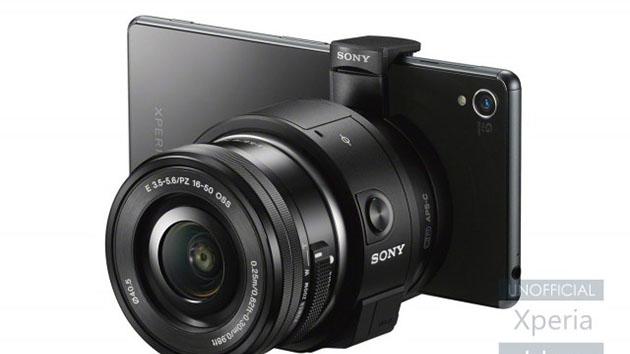
Sony's next smartphone-mounted camera will let you change lenses
If you're looking to rule Instagram, Sony's about to give you the ultimate smartphone weapon, judging by a leak from Xperia Blog. The site posted several purported images of the Sony ILCE-QX1, a lens camera system that'd work with interchangeable E-Mount style lenses. Sony's niche-oriented lens camera lineup is currently fixed-lens only with the QX10 and QX100 models. The QX100, for instance, is based on Sony's fantastic RX100 camera and priced for serious smartphone photographers at $500. Assuming the rumor pans out, the QX1 would have an even larger APS-C (26.7mm) sensor and take compatible E-Mount lenses. There are no other specs, but as before, we'd expect that your smartphone will control the QX1 and capture images from it, with a mount that adapts to a wide variety of handsets. It'll also likely have a built-in memory card. There's no pricing yet, but as a rule, interchangeable-lens cameras are usually more expensive than fixed-lens models. Then again, Sony tends to break that rule. Update: Oh, and yes, that phone in the images appears to be the alleged Xperia Z3 that we spotted back in July.

Samsung's new mirrorless camera tries to fuse style with modest specs
For some, Samsung's NX mini mirrorless camera went too far in catering to the style-minded; while it's eye-catching, that small sensor and reduced control won't please demanding shooters. Appropriately, the company is bridging the gap between the mini and the bigger NX300 with its new NX3000. It has a svelte profile closer to that of its tinier sibling -- like it or not, the NX2000's grip is gone -- but it has the larger (DSLR-sized) 20.3-megapixel sensor, mode dial and hot shoe (with bundled flash) of the NX300. This mid-range camera even straddles the line when it comes to lenses, as one variant includes a 16-50mm stabilized power zoom lens that's shorter than the 18-55mm kit optics from heftier NX models.
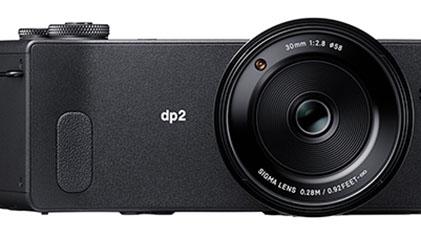
Sigma's dp Quattro cameras boast higher-resolution sensors and an extra-wide design
No, you're not looking at a projector -- it's the dp2 Quattro, the first of three cameras in Sigma's new dp Quattro lineup. That unusually wide, almost cinematic body is meant to provide a more balanced feel in the hand than the compact design of its predecessors. However, the real centerpiece is underneath: every camera has a new version of the three-layer, color-rich Foveon X3 sensor that takes higher resolution photos (20 megapixels versus 15.3) while improving both performance and battery life. Sigma has also made a leap to a faster TRUE III image processor. Unusually, there's also an optical viewfinder available for purists, which should work well with the fixed lenses. The dp2 Quattro will come with a 30mm f/2.8 general purpose lens, while the dp1 and dp3 will respectively carry 19mm wide-angle and 50mm telephoto optics. The company hasn't said just when the Quattro cameras will ship, but history suggests that they won't be cheap.

Sony unveils 16.1MP NEX-5T with NFC and WiFi, available this September
We assure you, the camera pictured above is not the NEX-5R. Announced today alongside three new E-mount lenses and the A3000, it's actually Sony's new NEX-5T. This shooter's unique feature is the addition of NFC for tap-to-device transfers of videos and photos -- a nice complement to the WiFi connectivity. Aside from that, it's pretty similar to its predecessor. Internally, you'll find the same 16.1-megapixel APS-C sensor with a maximum ISO sensitivity of 25,600 and hybrid phase-/contrast-detect autofocus for still images. The outside houses the familiar 921k-dot 3-inch touchscreen (with 180 degrees of rotation), a rear-set navigation dial and a function button (both programmable) adjacent to the shutter button. Photographers and videographers alike should be pleased with 1080/60p video capture and continuously focused 10-frames-per-second burst shooting. This NEX can also handle Sony's various Play Memories Camera Apps for extended versatility. The NEX-5T is set to launch this September in white, black and silver for $700 with a 16-50mm pancake powered-zoom lens, and $550 for just the body. For now, grab a better glimpse by checking out the embedded galleries. Full press release after the break.

Ricoh unveils $800 GR compact with 16-megapixel APS-C sensor, continuous autofocus
Though it's a bit late to the large-sensor compact game, Ricoh just jumped into the fray with a model that might tempt the high-end grab and go set: the GR. Following a trail blazed by the likes of Sony and Nikon with its Coolipix A, Ricoh's new advanced compact packs very similar specs to the latter: a 16-megapixel APS-C-sized sensor, fixed 18.3 mm f/2.8 lens, ISO 25,600 capability, pop-up flash, Eye-Fi card compatibility, 1080 / 30p AF video and 4 fps shooting with continuous autofocus for "fast-moving subjects." The similarities end with the price, however, since Pentax's owner is offering the GR for $800 compared to $1,100 for the Nikon, and has eschewed the optical low-pass filter to increase sharpness and further tempt high-end shooters. You'll be able to grab one stateside next month -- check the PR after the break for more.

Nikon announces DX-format Coolpix A with 16.2MP APS-C sensor, $1,100 MSRP
Not ready to shell out $2,800 for Sony's full-frame RX1 point-and-shoot? Perhaps an APS-C compact is more within your league. Nikon's Coolpix A is the imaging giant's answer to Sony's fixed-lens flavor, sporting an 18.5mm (28mm equivalent) prime lens with a maximum f/2.8 aperture, "quick" autofocus performance, a manual focus ring and, at the center of it all, a 16.2-megapixel DX-format sensor. The idea here is that you'll get DSLR (or mirrorless camera) image quality and depth-of-field in a cam you can tuck away in your pocket. It's a concept we've seen manufacturers deliver on before, and now it's Nikon's turn. There's a handful of DSLR-like features, such as a full-size hot shoe with i-TTL compatibility, a dedicated mode dial, an adapter ring that accepts a lens hood or 46mm filters, and WU-1a WiFi module compatibility. There's no optical viewfinder in the box, but no matter -- you can add one on for a mere $450. You'll shoot 12- or 14-bit RAW image files at a sensitivity ranging from ISO 100-25,600, and you'll pay dearly for the privilege. $1,100 is the MSRP; black and silver, the color. The Coolpix A is set to hit stores later this month.

Sigma DP3 Merrill to ship in March, deliver distance macros for $999
Sigma may have left us waiting on details for the DP3 Merrill's launch, but not for long. It just confirmed that its next crack at a small Foveon X3 camera will reach US shops in March, when it should cost the same $999 on the street as its Merrill siblings. You're mostly getting a change in optics with the DP3 variant: it brings in a 50mm (75mm with crop factor) f/2.8 lens that allows bright macro and telephoto shots without cozying up to the subject. As long as you can live with quirks like VGA-only video, the DP3 Merrill is ready to pre-order at the source link.

Samsung unveils 3D-capable NX300 mirrorless camera and 45mm f/1.8 2D/3D lens ahead of CES, we go eyes on (update)
TVs and robotic vacuums aren't the only Smart-branded devices Samsung will be showing off at this year's CES. We just met with the company here in NYC to take a look at its newest entrant into the camera game, dubbed the NX300. No, it's not Android-equipped, but this 20.3-megapixel, APS-C shooter stands as its new flagship mirrorless model. It boasts the key gimmick feature of 3D capability for stills and videos (up to 1080p at 60fps), thanks to a new DRIMe IV processor. Getting the usual numbers aside, you'll be able to harness an ISO range of 100 to 25600, a maximum shutter speed of 1,6000 and a top speed of 8.6fps for JPG bursts. On back, you'll find a 3.31-inch, 768 dot AMOLED touch-display, and a d-pad-esque section with five buttons for manual control. Lastly, there's a dedicated mode dial on the top, along with a full-size hot shoe mount. This shooter is also WiFi-enabled like previous cameras in the range, allowing you to share content wirelessly, and giving you access to apps like a remote viewfinder that works with iOS and Android devices. Notably, the NX300 packs a hybrid phase / contrast-detection sensor or peppy auto-focusing as well. Having a new NX that can handle 3D naturally calls for a lens that can shoot it, and a 2D/3D-capable f/1.8 45mm lens was also shown to us -- a "world-first," according to Sammy. While you won't be able to shoot in 3D with older NX cameras (we're told they don't have the processing power), it'll still work as regular 2D lens if you're interested in its focal perspective. We spent a few fleeting moments with an engineering sample of the camera in-hand, so join us past the break for more. Follow all the latest CES 2013 news at our event hub.

Canon EOS M review: was Canon's first mirrorless ILC worth the four-year wait?
More Info Leaked EOS M photo looks like Canon's long-awaited mirrorless camera Canon unveils EOS M mirrorless: 18 MP APS-C, EF compatibility, $800 in October with 22mm lens Canon EOS M mirrorless camera hands-on It's here. Finally. Well, that is, if you happen to live in Japan. Canon's very first mirrorless interchangeable lens camera should be hitting shops the world over just as you begin to make room for that decked-out evergreen conifer, but the EOS M is already making the rounds in Canon's home country. It's available at select Japanese retailers for ¥109,900 (about $1,410, including sales tax). That lofty price will net you the EOS M in black, white or silver (the glossy red model remains elusive), complete with 55mm f/2 and 18-55mm f/3.5-5.6 EF-M optics, a Speedlite 90EX external flash and the EF-M Lens Adapter, enabling full compatibility with any and all of your EF and EF-S lenses. The US variant, which comes bundled with only the black 22mm "pancake" STM lens, should run you $799 when it appears stateside beginning October 15th, though neither country's model carries a particularly competitive price tag, especially considering how diverse (and well-equipped) the mirrorless ILC market has become. You might argue that Canon is borrowing a play out of Nikon's book when it comes to pricing the EOS M -- had the camera offered full DSLR functionality, including an advanced user interface, a $799 sticker might be justified. But the company has crippled its new compact shooter so as to avoid cannibalizing its still-successful full-size APS-C DSLR lineup, which includes models ranging from the Rebel T3 (about $475) to the EOS 7D (about $1,350). Appropriately, the EOS M falls right in the middle in terms of capabilities, with the added benefit of a new, nearly pocketable design that should win over more than its fair share of amateurs. That said, there's a reason larger SLRs remain on the market, and Canon very much wants to retain that solid footing. The EOS M isn't for everyone, and that's by design. But is it the right pick for you? Join us past the break as we try it on for size.

Hasselblad announces Lunar mirrorless camera, fancies up Sony's NEX-7 for 5,000 euros
The bar's pretty high when your company is behind the first camera in space. Hasselblad's looking to build on that theme with its new Lunar mirrorless, which according to the company "revives the timeless charm" of 1957's 500c -- and if nothing else, the camera's got a curvy, space age body, built out of high grade aluminum with either a carbon fiber (available in black, silver or titanium colors) or wood (beech, olive, pear or mahogany) grip. Inside, you'll get a Bionz processor and an APS-C 24.3 megapixel sensor. The Lunar has a 10 frames per second burst mode, full HD recording and sports a 100 to 16000 ISO range. On the rear, you'll find a swiveling three-inch display. All of that's packed into a body that weighs roughly a pound. Update: While we didn't quite realize it at first, the layout of the camera and its specs are clearly that of a rehashed NEX-7. As SonyAlphaRumors points out, the shooter accepts Sony's e-mount lenses and is part of new partnership between the two photography giants -- looks like we're soon to have even more Sony cameras re-purposed as Hasselblad's, similar to Leica and Panasonic. While the NEX-7 itself will run you roughly $1,100 to 1,200k (body-only vs. with a kit lens), SAR has the Lunar pegged at $5,000 Euro (about $6,530, or six NEX-7s). That's almost $1k more than Leica's utilitarian M-E and about as much as an M9 for, those keeping count -- but hey, at least the lunar can shoot video, right? Joe Pollicino contributed to this post.

Leica X2 gets à la carte, Paul Smith editions to help you stand out from plebeian photographers (update: hands-on)
Let's say you've been considering a Leica X2 for the mix of a big APS-C sensor and retro styling, but a $1,995, fixed-range compact camera just isn't exclusive enough. Leica has you covered with two extra-rare editions that rise above the pack. Provided you don't mind someone else designing for you, the Edition Paul Smith spices things up with a mix of black, green and orange that reflects the UK fashion designer's love of stripes and wilder colors. Is the small 1,500-unit batch of Paul Smith cameras still too common? There's now an à la carte X2 option to limit the production run to exactly one. After picking from black, silver or new titanium colors for the main body, you can choose from a set of leather trim colors and get custom engraving to hedge against the unlikely event that anyone confuses your X2 with someone else's. Prices aren't immediately available for the October launches of both cameras. Not that it matters much -- if you're willing to even consider a special edition Leica, you already know that it's within your price range. %Gallery-165713% Zach Honig contributed to this report.

Sony's NEX-6 satisfies the FCC with paperwork, guts
Still hungry for a closer look at Sony's WiFi-packing NEX-6 despite perusing our hands-on? Apparently the FCC feels the same, so it's used its government-granted authority to inspect the camera first-hand, and tear it apart in the process. This isn't the only time the 16.1-megapixel shooter has been given the ruler treatment, but a full copy of its user's manual has notably come along for its US visit. Check out the gallery below to view this NEX's guts, or hit the source link to gloss over a PDF of the instruction manual -- might as well get the boring stuff done before the package arrives in November.%Gallery-165226%





